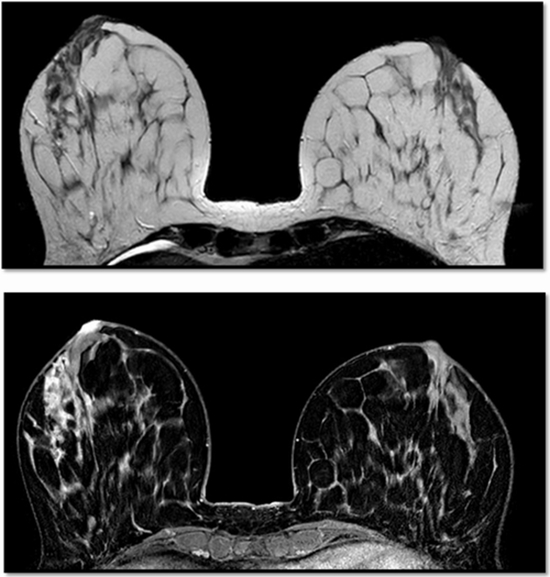Diagnostic investigation of breast magnetic resonance imaging in malignant and benign mass lesions
Breast magnetic resonance imaging (BMRI) has been identified as a valuable modality in the diagnosis of breast cancer and monitoring the response to chemotherapy. The aim of this study was to evaluate the relative importance of different descriptors of breast masses in contrast-enhanced breast MRI

Introduction: Breast magnetic resonance imaging (BMRI) has been identified as a valuable modality in the diagnosis of breast cancer and monitoring the response to chemotherapy. The aim of this study was to evaluate the relative importance of different descriptors of breast masses in contrast-enhanced breast MRI.
Material and methods: In a database of pathologically proven breast lesions, in total 433 masses in 312 patients detected by contrast-enhanced breast MRI were selected. All images were assessed according to the MRI BI-RADS lexicon and those with significant positive MRI findings (BI-RADS categories 3, 4, 5) were enrolled in the study.
Results: Mean age of patients was 45.09 ±10.5 years. The most frequent BI-RADS score was 4 (60.7%), followed by 3 (27%). Among the morphologic descriptors of the enhancing masses, the findings most strongly associated with malignancy included spiculated margin (60.6%) and irregular shape (38%). Considering the dynamic descriptors, a wash-out pattern in the time-intensity curve was the most powerful finding associated with malignancy (27.9%). Among all breast MRI descriptors, the best odds ratio (OR) in association with malignancy was noted for speculated margin (OR = 10.2) followed by wash-out or plateau curves (OR = 6.1), size greater than 1 cm (OR = 4.3) and irregular shape (OR = 3.1).
Conclusions: It seems that morphologic descriptors of MRI BI-RADS for enhancing masses are quite specific, while dynamic descriptors of the masses are highly sensitive. Appropriate consideration and combination of different BI-RADS findings could help in better characterization of enhancing masses on breast MRI, lowering the rate of false positive reports and avoiding unnecessary biopsies.






ارسال به دوستان